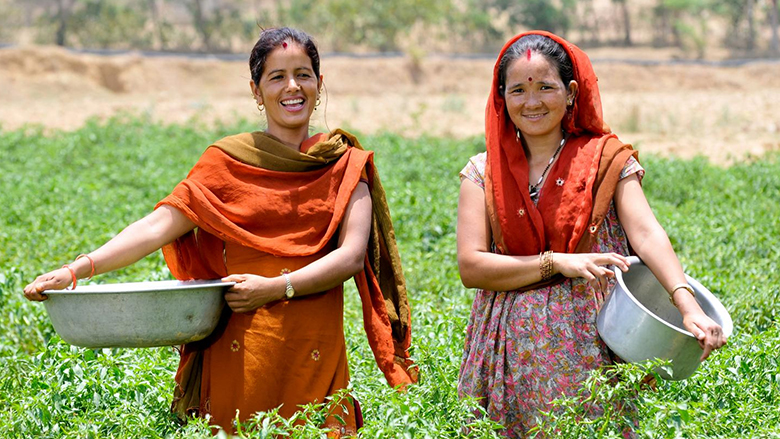Agriculture in the 21st century faces multiple challenges: an increased demand for food due to a growing population and changing diets, a levelling off of crop yields, and dwindling natural resources and biodiversity. The impacts of climate change bring additional threats to agriculture. A warming climate could cut crop yields by more than 25 percent, while the extreme weather events associated with climate change can have devastating effects on farmers, their land and crops.
Transforming the agriculture sector and building resilience will not be possible without significantly increasing the amount of capital available for climate-smart investments in agriculture. Access to finance has long been a challenge for agriculture due to perceptions of low profitability and high risks. More than ever, robust financial investments are needed to support the global food system.
A new World Bank discussion paper, Making Climate Finance Work in Agriculture, examines innovative ways to use climate finance to improve and increase access to finance for smallholder farmers and SMEs in the agriculture sector, while delivering positive climate outcomes, namely increased resilience and reduced emissions intensity.
The report recommends using climate finance to address key constraints in the agriculture finance landscape, such as inadequate enabling environments, insufficient capacity to manage agricultural risks and high transaction costs. It aims to do so by using climate finance as a catalyst to unlock additional sources of public and private sector capital, strengthen the links between financial institutions, smallholder farmers and SMEs, and build the capacity of both lenders and borrowers.
The report makes recommendations for how climate finance can accelerate climate smart investments in the agriculture sector:
- Designing innovative mechanisms and adapting others to leverage additional sources of both public and private capital that can be directed toward climate-smart investments in agriculture.
- Identifying key entry points, for directing climate finance into agriculture and linking financial institutions, smallholders and agricultural SMEs.
- Providing the necessary technical assistance to build the capacities of everyone involved in the financial ecosystem, including both lenders and borrowers.
Meeting the financing requirements for climate-smart agriculture implementation will be a significant challenge, but one that is central to addressing global food insecurity and poverty.
Agriculture can offer an opportunity for inclusive, economic growth, particularly in developing countries. With sufficient financing for sustainable and climate-smart production systems, the sector can unlock enormous economic potential while achieving several of the UN Sustainable Development Goals.
